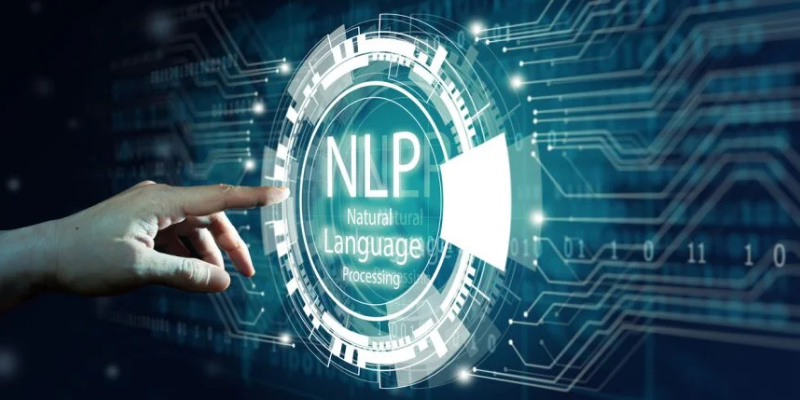
Implementing Natural Language Processing with Python's SpaCy and Hugging Face Transformers
Introduction
Using several NLP techniques to process human language, modern artificial intelligence heavily relies on NLP. There are two significant libraries in python development services which have transformed NLP SpaCy and Hugging Face Transformers. In this guide, you will learn from the intro to SpaCy through using it with Hugging Face Transformers as well as using it, fine tuning, and deploying it.
Why Choose SpaCy and Hugging Face Transformers?
This model is valued most of all for its speed, easy applicability, and an ability to address massive NLP tasks. Hugging Face Transformers is a package that comes with several beautiful state of the art pre-trained models such as BERT, GPT and RoBERTa that can be fine-tuned for downstream tasks.
The merging of these libraries affords an adequate toolset for tasks including; NER, text classification, and Sentiment analysis.
Getting Started with SpaCy
Installing SpaCy
Install SpaCy using pip:
pip install spacy
You can download a language model such as English (en_core_web_sm):
python -m spacy download en_core_web_sm
Basic Operations in SpaCy
Load the language model:
import spacy
nlp = spacy.load("en_core_web_sm")
doc = nlp("Apple is looking at buying a U.K. startup.")
Extract key information:
- Tokenization:
for token in doc:
print(token.text)
- Named Entity Recognition:
for ent in doc.ents:
print(ent.text, ent.label_)
Integrating Hugging Face Transformers with SpaCy
Installing Transformers
Install the Transformers library:
pip install transformers
Adding Transformer Models to SpaCy
Hugging Face models can be added as a pipeline component in SpaCy. For example:
from transformers import pipeline
from spacy.pipeline import Transformers
# Load a pre-trained Hugging Face model
classifier = pipeline("text-classification", model="distilbert-base-uncased")
# Add to SpaCy pipeline
nlp.add_pipe("transformer", name="bert")
Use Cases
Named Entity Recognition (NER)
Examples of NER are naming entities like people in text or places or organisations. With SpaCy, this can be enrich by incorporating transformer models.
Example:
from spacy.pipeline import EntityRuler
ruler = nlp.add_pipe("entity_ruler")
patterns = [{"label": "ORG", "pattern": "Hugging Face"}]
ruler.add_patterns(patterns)
This customizes NER by adding domain-specific entities.
Text categorization
Text categorization is the tagging of the text, say as spam or non spam or according to a certain topic.
Using Hugging Face Transformers:
from transformers import AutoModelForSequenceClassification, AutoTokenizer
tokenizer = AutoTokenizer.from_pretrained("bert-base-uncased")
model = AutoModelForSequenceClassification.from_pretrained("bert-base-uncased")
Fine-tuning lets pre-trained models fit certain datasets.
Sentiment Analysis
Sentiment analysis categorizes textual content based on the sentiments expressed in those contents (positive, neutral, or negative).
Example:
classifier = pipeline("sentiment-analysis")
result = classifier("I love using Hugging Face models with SpaCy!")
print(result)
Fine-Tuning Pre-Trained Models
Why Fine-Tune?
Models such as BERT, are pretrained on general data. Tuning makes them more suitable to specific tasks optimising performance.
Steps for Fine-Tuning
- Load Pre-Trained Model:
from transformers import Trainer, TrainingArguments
model = AutoModelForSequenceClassification.from_pretrained("bert-base-uncased")
- Prepare Dataset:
from datasets import load_dataset
dataset = load_dataset("imdb")
- Define Training Parameters:
training_args = TrainingArguments(
output_dir="./results",
evaluation_strategy="epoch",
learning_rate=2e-5,
per_device_train_batch_size=8,
num_train_epochs=3
)
- Train Model:
trainer = Trainer(
model=model,
args=training_args,
train_dataset=dataset["train"],
eval_dataset=dataset["test"]
)
trainer.train()
Comparative Analysis: Efficiency and Accuracy
SpaCy’s Strengths
- Speed: Designed for production.
- Ease of Use: Pre-built pipelines for common NLP tasks.
Hugging Face’s Strengths
- Accuracy: State-of-the-art transformer models.
- Flexibility: Extensive model hub for diverse use cases.
Trade-offs: While SpaCy is faster, Hugging Face offers better accuracy for complex tasks. Combining them leverages both speed and accuracy.
Deploying NLP Applications
Using FastAPI for Deployment
FastAPI provides a lightweight solution for serving NLP models.
Example API:
from fastapi import FastAPI
app = FastAPI()
@app.post("/analyze")
def analyze_text(text: str):
doc = nlp(text)
return {"entities": [(ent.text, ent.label_) for ent in doc.ents]}
Running the API
Save the code as app.py and run:
uvicorn app:app --reload
Access the API at http://127.0.0.1:8000/analyze.
Interactive Code Demonstration
Here is a complete demonstration for integrating sentiment analysis with deployment:
from fastapi import FastAPI
from transformers import pipeline
# Load model
classifier = pipeline("sentiment-analysis")
app = FastAPI()
@app.post("/sentiment")
def sentiment_analysis(text: str):
result = classifier(text)
return result
Test the API with python development tools like Postman or cURL.
FAQ
- What is the advantage of combining SpaCy and Hugging Face?
SpaCy has been developed for speed while Hugging face focuses on up-to-date accuracy which makes this solution versatile for various NLP applications.
- Can I use Hugging Face models for NER in SpaCy?
Yes, for boosting up the performance of NER in SpaCy, Hugging Face models can be integrated to the pipeline.
- How do I deploy an NLP model?
You can use frameworks like FastAPI or Flask and design APIs with which you can deploy NLP models.
- What are some common NLP tasks?
They are named Entity Recognition, Sentiment Analysis, Text Classification, Machine Translation and Summarization.
- Is fine-tuning necessary for all tasks?
It also enhances the efficiency when utilised mainly in specific domains of application but can work without modifications throughout a broad set of applications.
Conclusion
In this blog, we have shown the key possibilities for the combined use of SpaCy and Hugging Face Transformers, which allows developers to use the advantages of both libraries for solving a wide range of NLP problems. SpaCy provides both productivity and straightforward interfaces and pipelines, and Hugging Face provides recent model architectures for better performance. Such a combination allows to creation of flexible, highly functional, and scalable models for fine-tuning acute NLP models for certain domains or developing applications using APIs. These tools then, are more than for handling nearly every conceivable word-processing task, everything in Natural Language Processing is virtually open to you.

